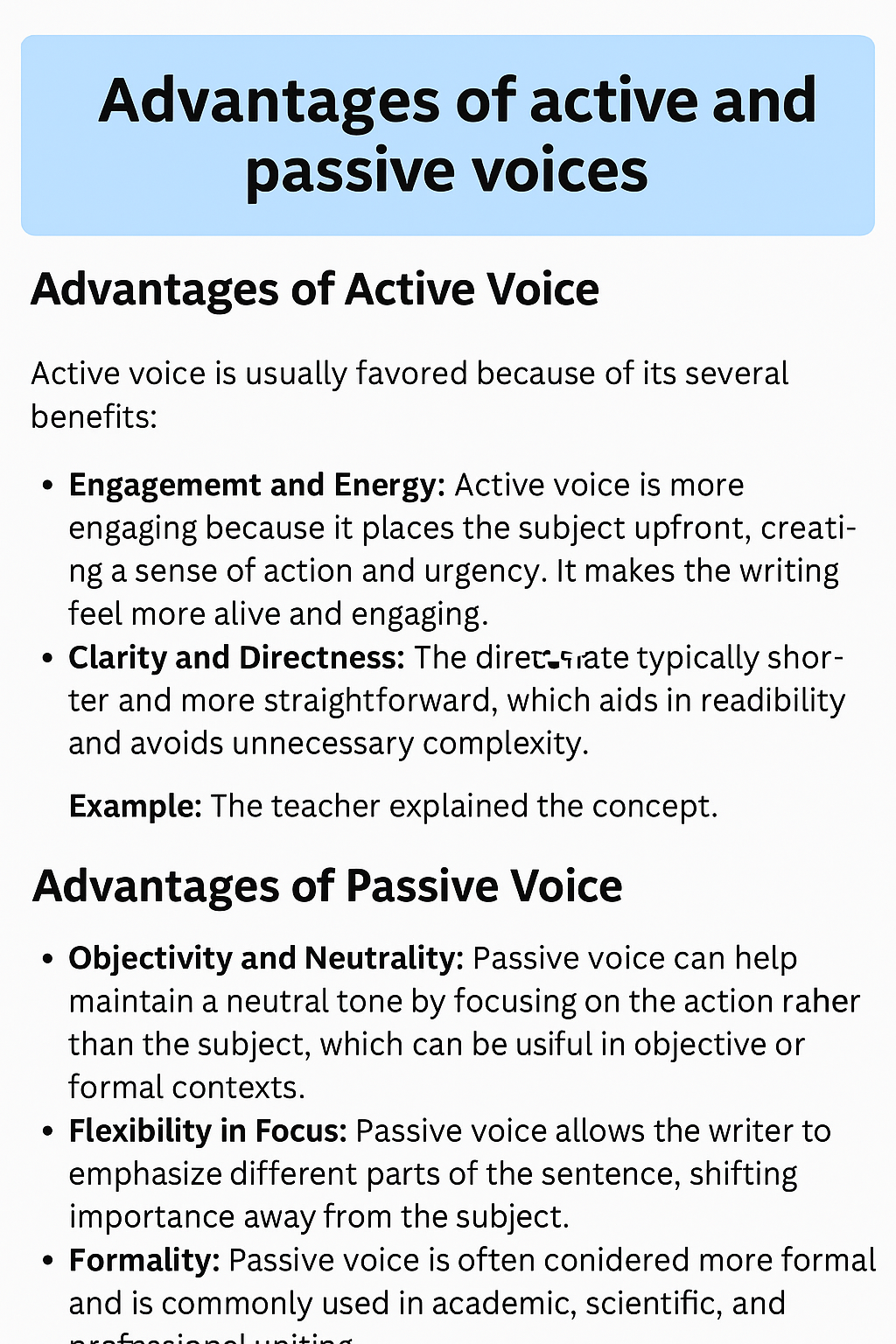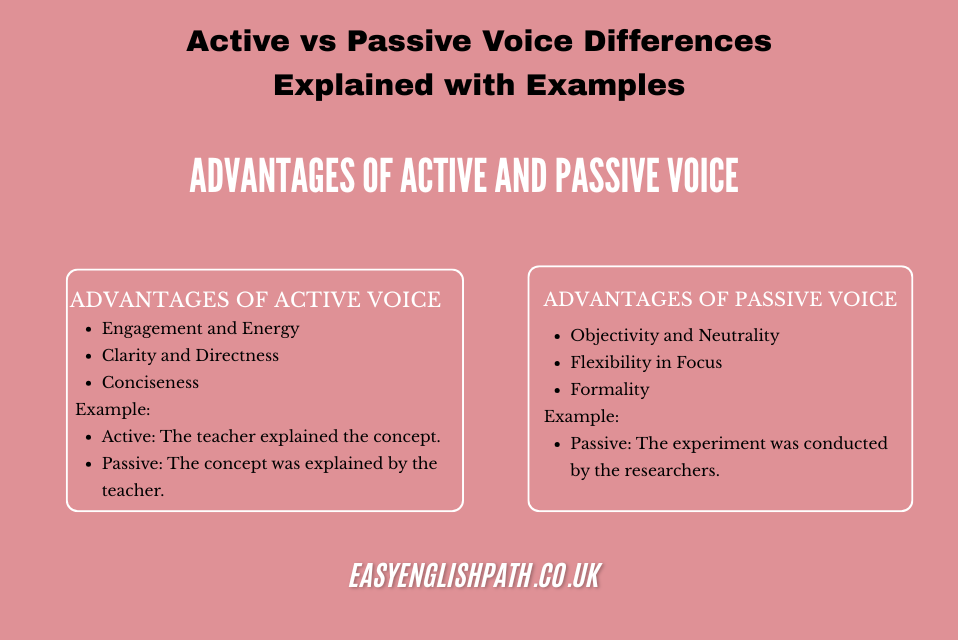In English, the way you structure a sentence can completely change how your message is understood. One of the most important choices is between active vs passive voice. These two grammatical structures affect clarity, tone, and emphasis in writing. The active voice makes sentences clear and direct, while the passive voice shifts focus, sometimes making writing sound less personal. Just like practicing with a do and does worksheet helps learners build a strong grammar foundation, understanding the differences between active and passive voice can greatly improve your writing, whether you are a student, professional, or casual learner.
What is Active Voice?
Active voice is the grammatical structure where the subject of the sentence performs the action expressed by the verb. This creates a direct, straightforward, and clear message. In an active voice sentence, the subject is in the “driver’s seat,” actively doing the action to the object.
Key Features of Active Voice:
- Subject performs the action.
- Clear and direct tone.
- Often shorter and more dynamic.
Example Sentences in Active Voice:
- The dog chases the ball.
- She loves reading books.
- I solved the problem.
As you can see, in each example, the subject (dog, she, I) is actively performing the action. This structure is commonly used in day-to-day conversations and most forms of writing, including essays, emails, and blogs.
What is Passive Voice?
In contrast, passive voice is a grammatical construction where the subject of the sentence receives the action instead of performing it. This shifts the focus from the “doer” of the action to the “receiver” or the action itself. Passive voice often results in more formal, indirect sentences and is widely used in scientific, formal, or academic writing.
Key Features of Passive Voice:
- Subject receives the action.
- Focus shifts to the recipient of the action or the action itself.
- Tends to be longer and more formal.
Example Sentences in Passive Voice:
- The ball was chased by the dog.
- Books are loved by her.
- The problem was solved by me.
In these examples, the focus is on the action or the object (ball, books, problem) rather than the subject. Passive voice is often used when the doer is either unknown or irrelevant to the context.
Active vs Passive Voice: Key Differences Here’s a quick comparison of active and passive voice:
| Aspect | Active Voice | Passive Voice |
| Focus | Subject (doer of action) | Object (receiver of action) |
| Sentence Structure | Subject + Verb + Object | Object + Verb + (by Subject) |
| Usage | Everyday communication, blogs | Academic writing, formal reports |
When to Use Active vs Passive Voice Choosing between active and passive voice depends on the tone, purpose, and focus of your writing. Each voice serves a distinct purpose and is more suitable for specific types of content.
When to Use Active Voice:
- Clarity and Engagement
- Personal and Conversational Writing
- Action-Oriented Writing
When to Use Passive Voice:
- Scientific and Academic Writing
- Objective and Formal Tone
- Uncertainty or Irrelevance of the Doer

Advantages of Active Voice
- Engagement and Energy
- Clarity and Directness
- Conciseness
Example:
- Active: The teacher explained the concept.
- Passive: The concept was explained by the teacher.
Advantages of Passive Voice
- Objectivity and Neutrality
- Flexibility in Focus
- Formality
Example:
- Passive: The experiment was conducted by the researchers.
How to Change Passive Voice to Active Voice
- Identify the Subject and Object
- Make the Subject the Doer
- Remove the Auxiliary Verbs
Example:
- Passive: The homework was completed by the student.
- Active: The student completed the homework.
When Not to Use Passive Voice
- When the Doer is Important
- When Clarity is Needed
Example:
- Passive: The decision was made by the committee.
- Active: The committee made the decision.
Common Mistakes in Active vs Passive Voice Usage
- Misidentifying the Subject in Passive Voice
- Overuse of Passive Voice
Example:
- Passive: The report was written last week. (Who wrote it?)
- Active: The researcher wrote the report last week.
How to Spot When to Use Passive Voice
- Emphasizing the Action or Recipient
- Unknown or Irrelevant Doer
- Maintaining Objectivity
Example:
- Active: The scientist conducted the experiment.
- Passive: The experiment was conducted by the scientist.
Changing Active Voice to Passive Voice
- Identify the Object
- Move the Object to the Subject Position
- Add the Appropriate Form of ‘To Be’
- Include the Original Subject (optional)
Example:
- Active: The chef cooked the meal.
- Passive: The meal was cooked by the chef.
Using Passive Voice in Different Sentence Types
- Interrogative Sentences:
- Active: Did the teacher grade the papers?
- Passive: Were the papers graded by the teacher?
- Imperative Sentences:
- Active: Sign the form.
- Passive: Let the form be signed.
- Exclamatory Sentences:
- Active: What a beautiful painting she created!
- Passive: What a beautiful painting was created by her!
Conclusion
Both active vs passive voice are valuable tools in English grammar. Active voice adds clarity and energy, while passive voice is useful when the action matters more than the doer. By understanding the strengths of each, you can make smarter choices that match your audience, purpose, and tone. Practicing with examples and paying attention to sentence structure will help you grow as a writer.
Beyond this, remember that mastering such skills highlights the importance of English language in education it not only improves writing but also builds confidence, communication, and success in academic and professional life. Start applying these techniques today, and you’ll see your writing become clearer, more engaging, and more effective.
FAQs: Active vs Passive Voice Differences
Q1: What is the difference between active and passive voice?
In active voice, the subject performs the action (e.g., The cat chased the mouse). In passive voice, the subject receives the action (e.g., The mouse was chased by the cat).
Q2: When should I use passive voice instead of active voice?
Use passive voice when the doer is unknown, unimportant, or you want to emphasize the action or recipient commonly in academic, scientific, or formal writing.
Q3: Why is active voice preferred in most writing?
Active voice is usually clearer, more direct, and easier to read. It engages readers by highlighting who is doing the action.







